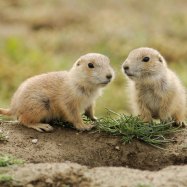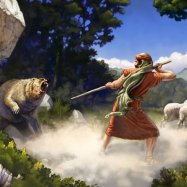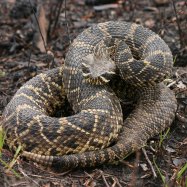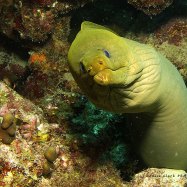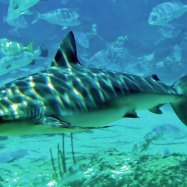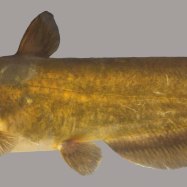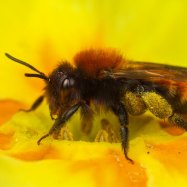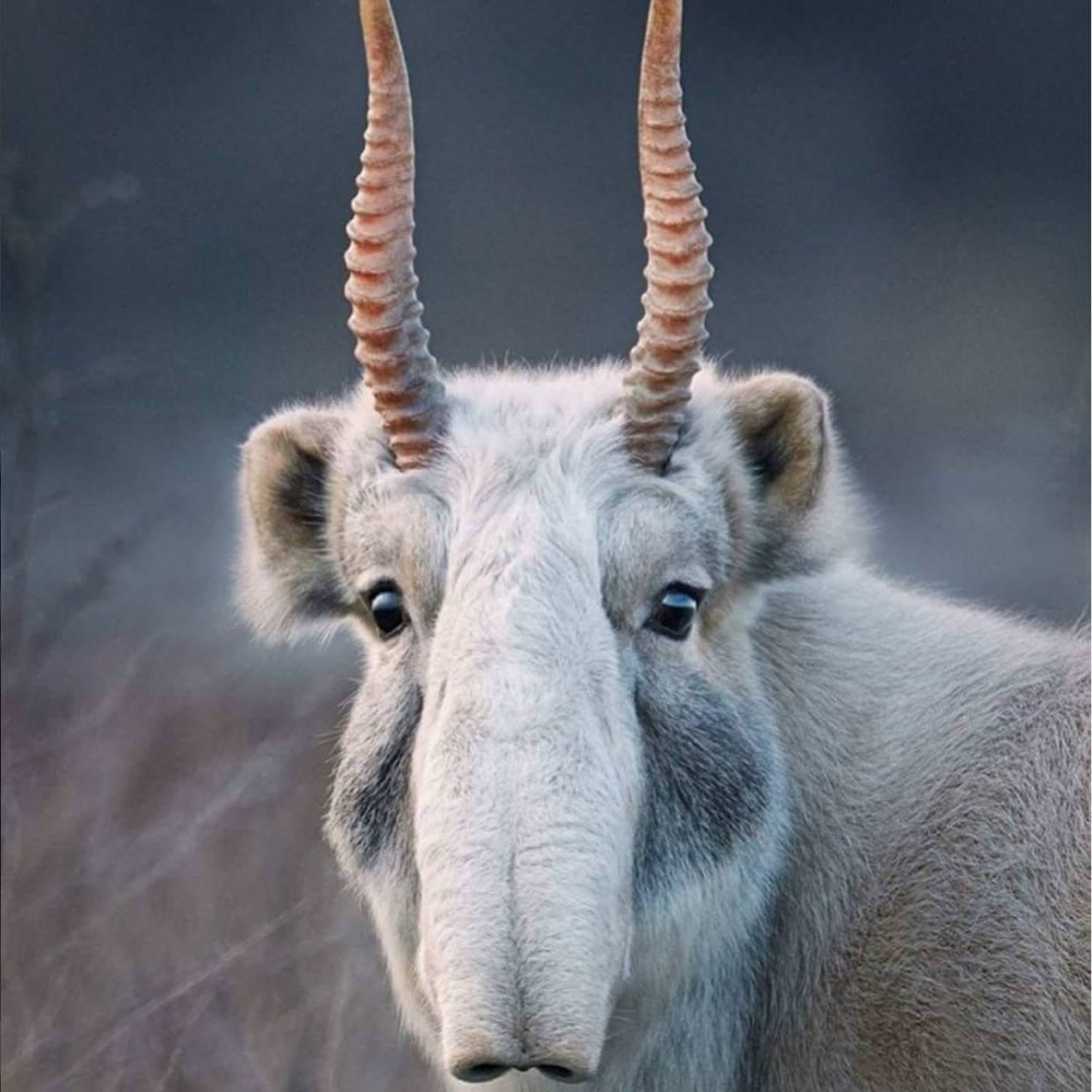
Saiga
1.2 to 1.5 meters
Saiga is a unique and endangered species found in Central Asia. It belongs to the Bovidae family and has a robust and stocky body shape. These antelopes can grow to be 1.2 to 1.5 meters long and are known for their distinctive large nose. Help protect the Saiga by learning more about these fascinating creatures and their habitat. #Saiga #CentralAsia #EndangeredSpecies
Animal Details Summary:
Common Name: Saiga
Kingdom: Animalia
Habitat: Grasslands, semi-desert, and steppe
The Fascinating Saiga – A Unique Animal Species of Central Asia
Central Asia is home to a diverse array of flora and fauna, and one of its most incredible species is the saiga. This unusual-looking animal, with its distinctive long, tubular nose, can only be found in Russia and its neighboring countries. With a scientific name of Saiga tatarica, this mammal belongs to the same kingdom and phylum as humans and many other animals – Animalia and Chordata, respectively.The saiga, also known simply as Saiga, is classified as a mammal and belongs to the order Artiodactyla, making it a close relative of other hoofed animals such as goats, deer, and bovines Saiga. Its specific classification within the animal kingdom is the family Bovidae, which includes cows, antelopes, and buffaloes. However, despite its scientific categorization, the saiga stands out as a species distinct from any other animal.
Saigas inhabit grasslands, semi-desert, and steppe regions of Eurasia, making them adapted to a harsh and dry environment. They roam freely across vast territories in Central Asia, with their range spanning across China, Mongolia, Kazakhstan, Russia, and Uzbekistan. This article will delve deeper into the intriguing features of this unique animal to learn more about the fascinating saiga.
A Unique Appearance and Distinctive Nose
One of the most striking features of the saiga is its oddly-shaped nose, which sets it apart from any other species in the animal kingdom. This tubular nose, known as a proboscis, is formed by an extension of its nasal bone. Not only does it give the saiga a peculiar look, but it also helps it survive in its natural habitat.The saiga uses its proboscis to filter the air inhaled through its nose Siberian Tiger. This filtration process protects its lungs from the dry, dusty environment in which it lives, allowing the saiga to thrive in hot and arid conditions. This unique adaptation has helped the saiga survive for millions of years in the steppes of Central Asia.
Apart from its prominent nose, the saiga's appearance is also characterized by its pale brown to gray coloration, which blends in with its surroundings. It has a robust and stocky body, with a height of around 80 centimeters and a length of 1.2 to 1.5 meters. Adult saigas can weigh between 26 to 69 kilograms, with males generally being larger and heavier than females.
A Plant-Based Diet
As a herbivorous species, the saiga's diet consists mainly of plants, specifically grasses, herbs, and shrubs. This feeding method is a crucial aspect of its existence, as it helps shape the saiga's behavior and habitat. With its proboscis perfectly adapted for feeding on low-lying plants, the saiga can thrive in areas where other hoofed animals may struggle to survive.The saiga's preference for a plant-based diet also has positive effects on its environment. Its grazing behavior helps maintain grassland ecosystems, contributing to the overall balance of the ecosystem. This role as a keystone species further emphasizes the saiga's significance in the natural world.
A Wide Geographical Distribution
The saiga's unique adaptations have enabled it to thrive in harsh environments, and as a result, it has a wide geographic distribution. Its range extends across the vast expanse of Eurasia, spanning several countries in Central Asia. Some of the main areas where saigas can be found include Russia, China, Mongolia, Kazakhstan, and Uzbekistan.Within each country, saigas inhabit specific regions, depending on the availability of resources and the suitability of the environment. For instance, in China, saigas are found in the basin and meadow areas of the Altai Mountains. In contrast, in Mongolia, they inhabit the Gobi desert and the Mongolian steppe. This geographical diversity further showcases the saiga's adaptability and ability to thrive in various habitats.
A Fascinating History of Evolution
The evolution of the saiga is a fascinating story that spans millions of years. The earliest known ancestor of the saiga dates back to the Pliocene era, over five million years ago. This ancestor was known as Progazella, and its remains have been found in modern-day Mongolia. However, it was not until the Pleistocene era, around 2.5 million years ago, that the saiga as we know it today began to evolve.During the Pleistocene era, the saiga underwent significant adaptations to survive in a changing environment. As the Earth's climate became drier and the grasslands expanded, the saiga's proboscis evolved to help it survive in these harsh conditions. This unique adaptability is one of the factors that have enabled saigas to thrive in Central Asia for millions of years.
Threats to the Saiga Population
Unfortunately, despite its incredible resilience and survival over millions of years, the saiga population is now facing a significant threat – humans. The saiga's unique features, particularly its proboscis, have made it a target for illegal poaching. Its nose is believed to have medicinal properties and is highly valued in traditional Chinese medicine.This illegal trade has resulted in a drastic decline in the saiga population, with its numbers decreasing by over 95% in just two decades. The saiga is now categorized as a critically endangered species, with only around 50,000 individuals remaining in the wild. Conservation efforts, such as the establishment of protected areas and anti-poaching measures, are being implemented to save this unique species from extinction.
Visiting the Saigas in Central Asia
For those interested in experiencing the wonder of the saiga first-hand, there are opportunities to visit them in their natural habitat. Several ecotourism companies offer guided tours to see the saigas in various countries in Central Asia. These tours not only allow visitors to observe the saigas but also provide an educational experience and help support conservation efforts.One of the best locations to see saigas is in the Ustiurt Nature Reserve in Kazakhstan. This reserve is home to the largest population of saigas, with around 80,000 individuals. Here, visitors can observe the saigas in their natural habitat and learn about their conservation from local experts.
In Conclusion
The saiga is undoubtedly a fascinating species, with its unique appearance and incredible adaptations to survive in its harsh environment. Its role as a keystone species and its valuable contributions to the ecosystem make it a crucial part of the natural world. Despite facing significant threats, the saiga continues to survive and thrive, showcasing its resilience and adaptability.By learning about and appreciating this unique animal, we can help raise awareness and support conservation efforts to protect the saiga population. With human intervention and conservation efforts, we can ensure that this remarkable species continues to roam the grasslands and steppes of Central Asia for millions of years to come.

Saiga
Animal Details Saiga - Scientific Name: Saiga tatarica
- Category: Animals S
- Scientific Name: Saiga tatarica
- Common Name: Saiga
- Kingdom: Animalia
- Phylum: Chordata
- Class: Mammalia
- Order: Artiodactyla
- Family: Bovidae
- Habitat: Grasslands, semi-desert, and steppe
- Feeding Method: Herbivorous
- Geographical Distribution: Eurasia
- Country of Origin: Russia and neighboring countries
- Location: Central Asia
- Animal Coloration: Pale brown to gray
- Body Shape: Robust and stocky
- Length: 1.2 to 1.5 meters
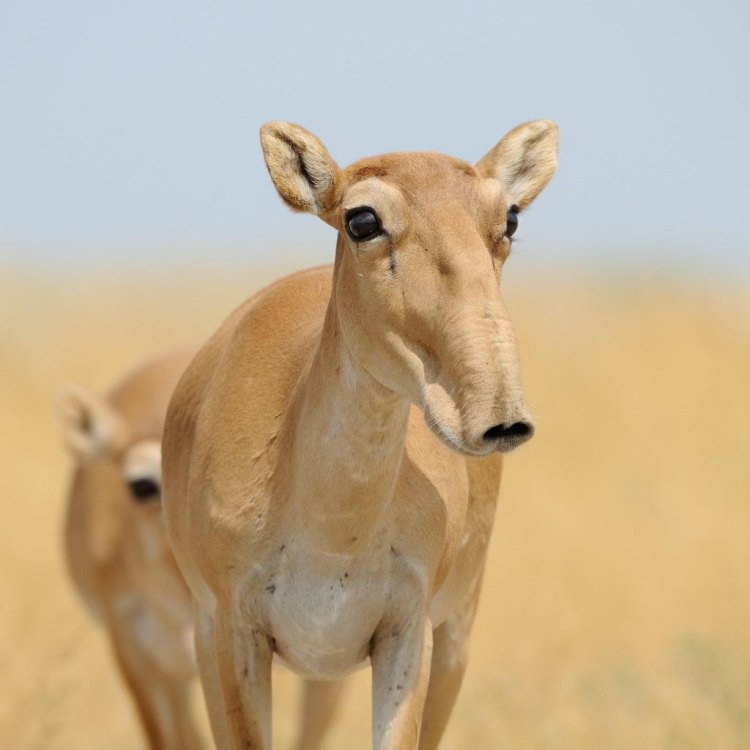
Saiga
- Adult Size: 70 to 80 centimeters at the shoulder
- Average Lifespan: 6 to 10 years in the wild
- Reproduction: Sexual
- Reproductive Behavior: Polygamous
- Sound or Call: Snorts and barks
- Migration Pattern: Seasonal migration over long distances
- Social Groups: Mixed-sex herds
- Behavior: Diurnal and gregarious
- Threats: Hunting, habitat loss, and illegal trade
- Conservation Status: Critically Endangered
- Impact on Ecosystem: Important for grassland biodiversity
- Human Use: Hunted for their horns and meat
- Distinctive Features: Large, flexible nose and unique curved horns
- Interesting Facts: Saigas have the ability to inflate and deflate their nostrils.
- Predator: Wolves, golden eagles, and snow leopards
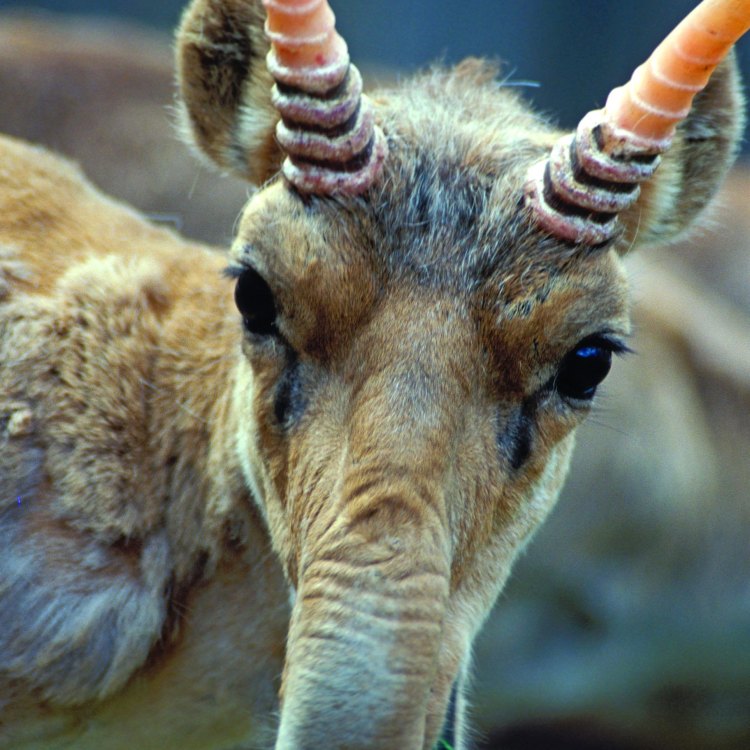
Saiga tatarica
The Fascinating Saiga Antelope: A Critically Endangered Species
The vast grasslands of Central Asia are home to a unique and enigmatic creature - the saiga antelope. With its unusual appearance and behavior, the saiga has captured the imagination of many researchers and wildlife enthusiasts around the world. However, despite its intriguing nature, this animal is facing a severe threat of extinction, making its conservation a pressing issue.In this article, we will delve into the distinctive features, behavior, and role of the saiga antelope in its ecosystem, as well as the threats it faces and efforts being made to protect this critically endangered species PeaceOfAnimals.Com.
Appearance and size
The saiga antelope (Saiga tatarica) is a medium-sized mammal, measuring between 70 to 80 centimeters at the shoulder and weighing between 35 to 70 kilograms. It has a compact body with a hump on its back, thin legs, and a small tail. What makes it stand out is its large and flexible nose, allowing it to filter out dust and warm up cold air in the winter. This feature has earned it the nickname "the antelope with a trunk."However, the most striking feature of the saiga is its unique curved horns, which both males and females possess. The male's horns are much larger and thicker, while the female's horns are smaller and thinner. These horns play a vital role in competition and display during the mating season.
Behavior and social structure
Saigas are gregarious animals, meaning they live in large groups. These groups, or herds, consist of both males and females, and they often mix and change members Spider Monkey. During the mating season, males compete for the attention of females, and this often leads to disputes and dominance displays.Saigas are also diurnal, meaning they are active during the day, and they are known to migrate seasonally in search of better grazing grounds. These migrations can cover vast distances, with some herds traveling up to 500 kilometers. This behavior helps them avoid harsh weather conditions and find the best food sources.
Reproduction and offspring
Like most mammals, saiga reproduction is sexual, meaning they require a male and a female to produce offspring. During the mating season, which usually takes place between November and December, males compete for the right to mate with females. Once a male has won over a female, they form a pair bond and remain together during the gestation period.Female saigas give birth to single calves between April and May, after a gestation period of around 5 months. The offspring have a reddish-brown coat and are able to stand and walk within an hour of being born. They are weaned off their mother's milk after 4 to 5 months and reach sexual maturity around 2 years of age.
Threats and conservation status
Sadly, despite its distinctive features and fascinating behavior, the saiga antelope is facing a severe threat of extinction. The primary cause of this threat is hunting, both for its valuable horns and meat, which is considered a delicacy in some cultures. Illegal trade also poses a significant threat, as saigas are often smuggled out of their habitat for traditional Chinese medicine.Habitat loss is another major concern for the saiga antelope. Human activities such as farming, mining, and infrastructure development have led to the destruction and fragmentation of their natural habitat, making it difficult for them to find suitable grazing grounds and disrupting their migration patterns.
As a result of these threats, the saiga antelope is listed as critically endangered on the IUCN Red List, which means it is facing an extremely high risk of extinction in the wild. The population has declined drastically in recent decades, with numbers dropping from over a million in the 1970s to only an estimated 50,000 individuals today.
Role in the ecosystem
Despite its relatively small size and dwindling population, the saiga antelope plays a crucial role in its ecosystem. They graze on a variety of plants in the grasslands, acting as important seed dispersers and maintaining the balance of vegetation. Their seasonal migrations also help in nutrient cycling and the distribution of plant species, which can benefit other grazing animals.Furthermore, saigas are an essential prey for several predators in their habitat, including wolves, golden eagles, and snow leopards. Their decline could have a ripple effect on the food chain and negatively impact the populations of these predators.
Efforts towards conservation
Recognizing the urgent need to protect and conserve the saiga antelope, various organizations and governments have taken steps towards their preservation. One of the most significant conservation efforts is the establishment of protected areas, such as nature reserves and national parks, where saigas can live and breed safely.The governments of Kazakhstan, Russia, Mongolia, and Uzbekistan, which are home to the saiga antelope, have also banned hunting and the export of saiga horns to curb the illegal trade. Additionally, conservation organizations have been conducting research on saiga behavior, promoting community education and awareness, and providing support for sustainable livelihoods for local communities.
Moreover, transboundary initiatives, such as the Saiga Conservation Alliance, are working towards collaboration and coordination between the countries to implement effective conservation measures for the saiga antelope.
Interesting facts
Apart from its distinctive features, behavior, and role in the ecosystem, the saiga antelope has some fascinating and unique abilities. One of these is their ability to inflate and deflate their nostrils, which helps them filter dust and regulate their body temperature in extreme weather conditions. This ability has also earned them the title of "nature's built-in air filter."Another little-known fact is that saigas can run at speeds of up to 80 km/h, making them one of the fastest land animals. Also, their horns are one of the few mammalian organs that can regenerate. In the event of injury or breakage, the horns can grow back, though not to their full original size.
In conclusion
The saiga antelope is a one-of-a-kind species that captivates with its unique features, behavior, and role in the ecosystem. Sadly, it is also a critically endangered species, facing numerous threats that have led to a sharp decline in its population. However, with concerted efforts towards conservation and protection, there is still hope for the saiga antelope to thrive in its natural habitat. We must recognize the importance of preserving this magnificent creature for future generations to appreciate.
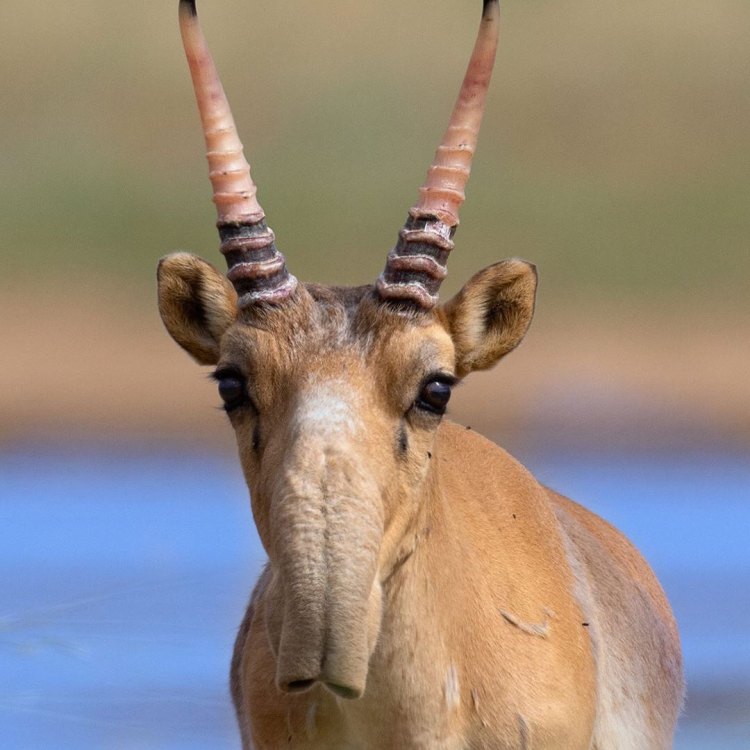
The Fascinating Saiga – A Unique Animal Species of Central Asia
Disclaimer: The content provided is for informational purposes only. We cannot guarantee the accuracy of the information on this page 100%. All information provided here may change without prior notice.

